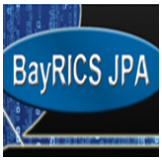Case Study: BayRICS and BayWEB
Submitted by the APCO Broadband Committee
Just as network technology relies on cutting edge innovation, so too does the way in which networks are created, maintained and funded. In the San Francisco Bay Area, a unique partnership between Motorola, regional public safety offices and the Bay Area Regional Interoperable Communications Systems Authority (BayRICS) allows for a collaborative solution to network creation.
In 2010, Motorola Solutions, Inc. was awarded a $50.6 million federal Broadband Technology Opportunities Program (BTOP) grant to build BayWEB, a wireless broadband network for public safety in the San Francisco Bay Area. Motorola, using BTOP funding and matching funds, will build, operate and maintain the network, consisting of Evolved Packet Core (EPC), microwave backhaul network and eNodeB Radio Access Network (RAN). Local public safety agencies contribute radio sites for the RAN and backhaul infrastructure (primarily dark fiber) through Site Use Agreements with Motorola. The BayRICS Authority provides regional governance and oversight and will also be responsible for specific “local control” functions, such as billing, subscriber provisioning, prioritization and some training and support functions.
In 2011, the parties negotiated a master agreement and System Funding Plan[1] that defined the innovative partnership and operational business model. Under this model, Motorola would charge $38/user/month to cover the costs of operating the network. In addition, BayRICS would charge an additional $5/user/month as a surcharge to cover local control costs such as billing, provisioning and user support, resulting in a total cost to agencies of $43/user/month. However, the Plan points out that future system expansion, backhaul and system refresh costs may require increasing the surcharge to cover those costs in future years.
BayRICS, through its Technical Advisory Committee (TAC), did considerable research in identifying and estimating costs associated with contributions of sites and infrastructure, and the BayWEB funding plan identified specific costs to members, such as electrical costs, site maintenance/security and cost of staff time to interface with Motorola and escort contractors while on site. BayRICS also considered a number of ways to mitigate those costs, including plans to credit back some portion of the subscriber fees to those member agencies that contribute sites or backhaul. For example, BayRICS considered increasing the surcharge for agencies that did not contribute sites and then passing this revenue on to agencies who did contribute sites, waiving the surcharge for contributing agencies, and offering “rebates” back to members to recover a portion of their actual site costs at the end of each year.
However, each of these plans created significant risk that BayWEB would fail to generate enough revenues to cover its operational costs, which would threaten the long-term sustainability of the project. Moreover, BayRICS’ research indicated that $43/user/month was very near the upper limit of pricing that would still encourage high levels of public safety users to adopt the service. BayRICS also recognized that increasing the surcharge to members with no site contributions would be perceived as unfair and could have resulted in deterring significant public safety use of the network.
The challenge of sustainability versus compensation for site costs proved to be a complex part of the negotiations and resulted in costly delays for the project. In the end, the System Funding Plan provided no compensation for member contributions of sites and infrastructure, but set a goal to revisit the question annually during budget development. If BayRICS determined that the revenues from the $5 surcharge exceeded operating costs, any excess revenues would be allocated among the site-owning agencies.
The BayRICS Funding Plan identified other costs that public safety agencies will likely incur as they adopt FirstNet. For example, “back office” connectivity costs (i.e. the cost of connectivity to the agency’s PSAP, dispatch and data servers) may be significant for some agencies not already connected by fiber. Also, there may be significant costs in upgrading or purchasing standardized applications if an agency’s current CAD or data applications are not supported on the network. User training and support must be comprehensive and continuous to be effective, but will add additional costs. There will also be a cost of local control, such as support for governance, planning and decision-making for local and regional provisioning and prioritization activities. Lastly, the costs of user devices to operate on the new networks will be substantial and may prohibit many agencies from robust subscribership levels, especially until existing devices reach end of life. These costs must be considered when developing pricing and sustainability models for the nationwide network.
Collaboration in network funding does not come without its own set of considerations and complexities. It is important, however, to learn from the precedent of a case study like BayWEB when searching for innovative solutions to network operations.\
References:


